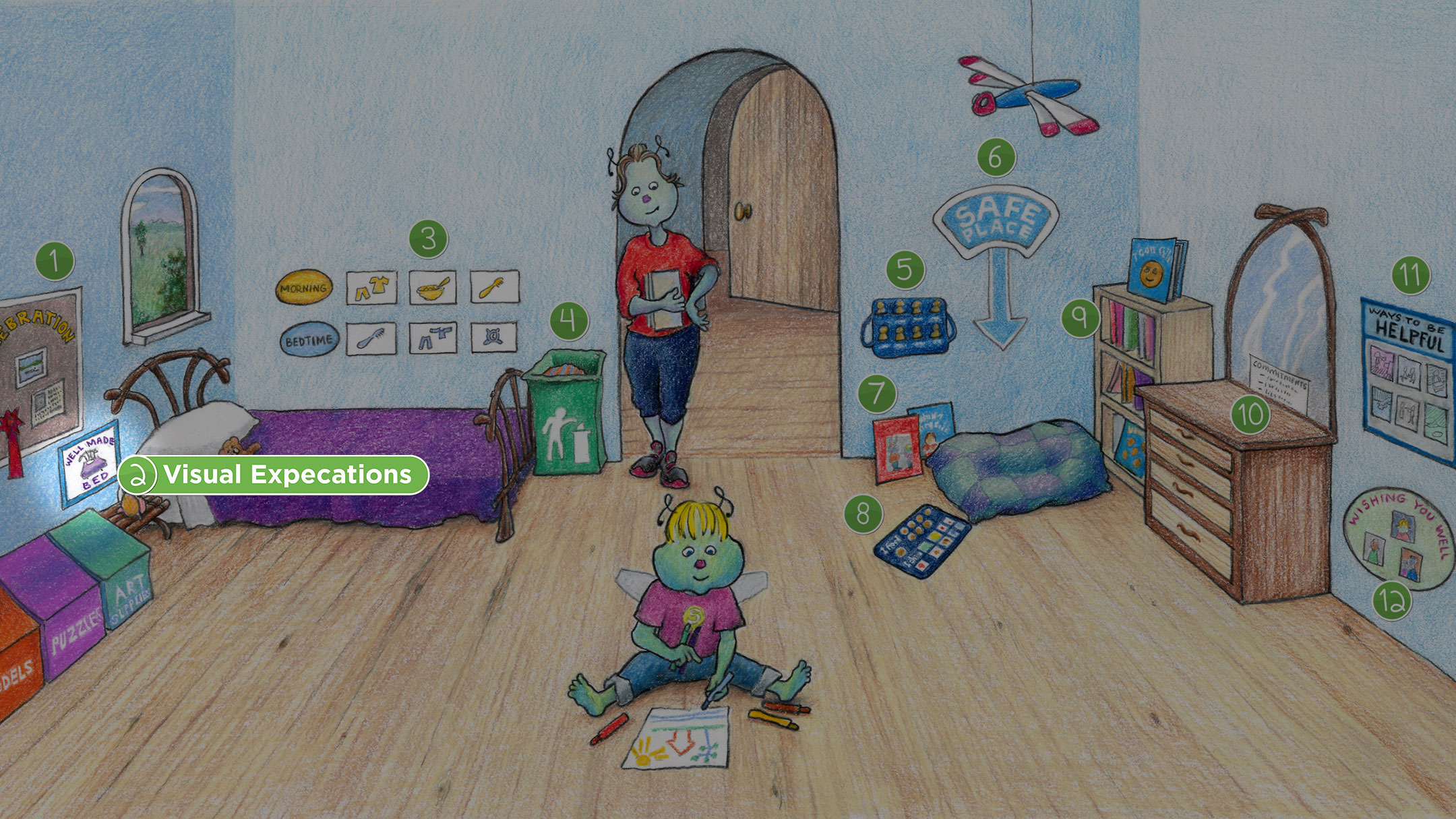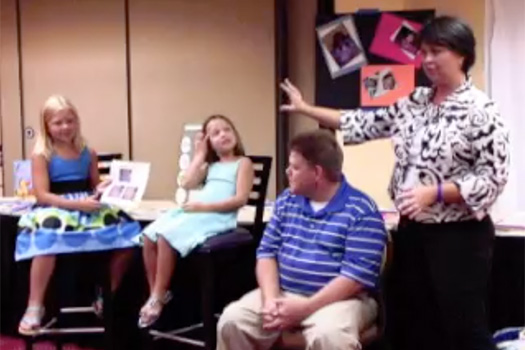Welcome to Shubert’s Home
Elementary Age Bedroom: Visual Expectations

Elementary Age Bedroom: Visual Expectations
How to Use Visual Expectations in the Elementary Age Bedroom
“A picture is worth a thousand words.” When you say, “Make your bed,” you may envision the blanket smooth and even across the bed, the pillows fluffed, and the stuffed animals lined up neatly along the headboard. An elementary schooler like Shubert may hear the words, “Make your bed,” and envision throwing the blanket roughly across the bed and tossing the stuffed animals randomly on top of it. A photograph that shows your expectation of a well-made bed is truly worth a thousand words. It leaves no doubt about your expectations for a properly made bed. The child can see the bed and see the photo, and work toward making the two match. (And if the two don’t match, you can gently guide the child to look at the photograph.) Plus, unlike parents, photos never get tired of showing children what to do or how to do it!
Visual Expectations and “Picture Rules” show children exactly what we want them to do in a given situation. The more information we give children about our expectations, the more likely they are to cooperate and succeed. Be certain, however, that the expectations you are setting are doable for your child’s age and ability, and that you are thoroughly teaching the skills needed to be successful. Set the expectation, show the expectation visually, teach the expectation (multiple times), practice it together (multiple times at varying intervals), and encourage, encourage, encourage to help ensure your child’s success.
The laundry hamper with an image of someone putting clothes in a hamper is another example of a Visual Expectation in Shubert’s room. What images would help your children be more successful in meeting your expectations?



